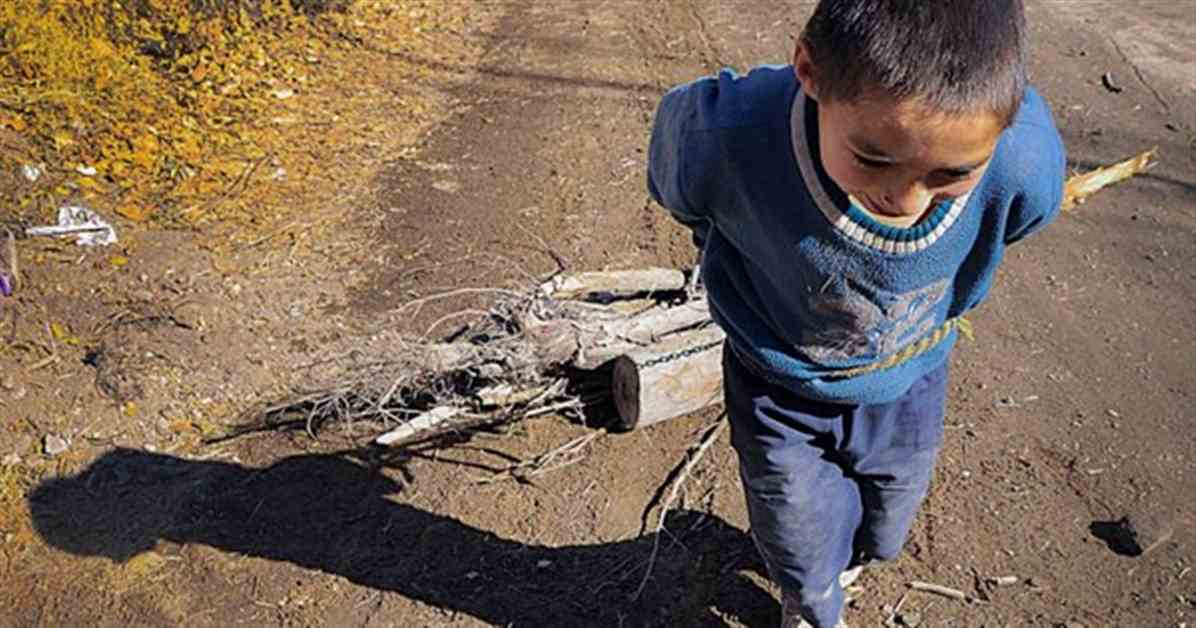A full childhood is essential for people’s development, which is why it is very important that children’s hands are vehicles for play and not for work. This Wednesday, June 12, the World Day Against Child Labor is commemorated, and the HUARPE DAILY spoke with representatives from various sectors to learn about the reality of San Juan regarding this scourge.
On one hand, from the Ministry of Labor, the head of the division, Franco Marchese, reported that «the economic situation facing the country leads to this situation on the streets» and was clear: «San Juan is not exempt from this, and the reports come from the remote departments, mainly.»
In this sense, the province must be segmented, as the situation is not the same throughout the territory. «Each department has its own reality, I always use the example of the Sarmiento department, where we have third-category mining, which involves the family working. The father decides that everyone has to work and involves the minors as well.»
Regarding the areas where more cases of child labor have been identified, there is agricultural activity, harvesting, and brick makers.
It is important to consider that children who are victims of labor exploitation can develop a series of issues in their normal performance, which will bring negative consequences both academically and socially. To learn in detail about the negative effects of child labor, HUARPE DAILY spoke with the master’s in Psychology Silvana Bellotti, who detailed: «The child begins to experience stress and anxiety, starts to live adult things that can affect them in the future. These same children may have low self-esteem and a very difficult and unfair view of life. The two tasks they should have are to play and learn in a school environment accompanied by adults.»
Emotional and Educational Impact
The daily life of a working child is completely different from that of others. «Many children cannot go to school because of these tasks, and those who do have learning problems,» Bellotti said. This is because «their academic performance decreases due to fatigue, lack of time to study, which can also lead to social isolation because child labor takes away the time they have to play with their friends and participate in recreational activities,» emphasized the specialist.
Having fewer educational opportunities can lead to a future where the possibilities of working in the labor market lead to poorly paid work. «The consequences are lifelong, although we also trust a lot in the resilience of people who have had to experience these situations,» said the psychologist at the end.
Reports
The Government’s request is for society to commit against this scourge and make the corresponding report when witnessing a case of child labor exploitation. To report to the competent authorities, complainants can call 102 or 911.
Government Actions
The Provincial Commission for the Prevention and Eradication of Child Labor (Copreti) is a multisectoral table that includes various actors in the province such as all ministries, municipalities, unions, industrial unions, entrepreneurs, among others.
On Monday, June 10, the second meeting of this commission was held to advance in the creation of an action protocol in the face of a case of child labor. Franco Marchese, Deputy Minister of Labor, indicated that «we have a draft that has already been presented to all Copreti members for them to study, read, and make some kind of reform or leave it as it is. We are working on refining this protocol.»
Numbers in the World
Currently, 160 million children are still working. That is, almost one in ten children worldwide. Africa ranks first among regions, both in terms of the percentage of children in child labor (one-fifth) and the absolute number of children in child labor: 72 million. Asia and the Pacific rank second with 7% and 62 million in absolute terms.
The regions of Africa and Asia and the Pacific together account for almost nine out of ten children in child labor worldwide. The remaining population is divided between the Americas (11 million), Europe and Central Asia (6 million), and the Arab States (1 million). In terms of incidence, five percent of children are in child labor in the Americas, four percent in Europe and Central Asia, and three percent in the Arab States.












